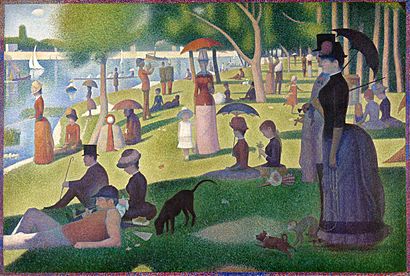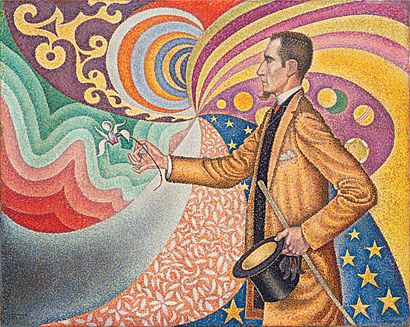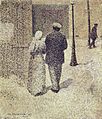Neo-impressionism facts for kids
Quick facts for kids A Sunday Afternoon on the Island ofLa Grande Jatte |
|
|---|---|
 |
|
| Artist | Georges Seurat |
| Year | 1884–1886 |
| Type | Oil on canvas |
| Location | Art Institute of Chicago, Chicago |
| Portrait of Félix Fénéon | |
|---|---|
 |
|
| Artist | Paul Signac |
| Year | 1890 |
| Type | Oil on canvas |
| Location | Museum of Modern Art, New York |
Neo-impressionism was a cool art style that started in France in 1886. It was founded by a famous artist named Georges Seurat. His most well-known painting, A Sunday Afternoon on the Island of La Grande Jatte, showed off this new style for the first time.
Contents
What is Neo-impressionism?
This art movement began when many painters were looking for fresh ways to create art. Artists who followed Neo-impressionism loved to paint modern city scenes. They also enjoyed painting beautiful landscapes and ocean views.
Neo-impressionist painters used science ideas about lines and colors in their art. They wanted to make their paintings look very precise and bright.
Painting with Dots: Pointillism
One of the most important techniques in Neo-impressionism was called Pointillism. This is why you often hear about Pointillism when people talk about Neo-impressionism.
In Pointillism, artists painted tiny, separate dots of pure color onto the canvas. When you stand far away, these dots blend together in your eyes. This creates new colors and a shimmering effect. It's like how a TV screen makes a picture from tiny colored lights!
Who Named Neo-impressionism?
An art critic named Félix Fénéon first used the name "Neo-impressionism". He wrote about it in a Belgian magazine called L’art Moderne in 1886.
Fénéon wanted to show that Seurat's painting style was different from the older Impressionism movement. The Neo-impressionism movement lasted for about five years in total.
Images for kids
-
Paul Signac, 1890, Portrait of Félix Fénéon.
-
Henri-Edmond Cross, The Evening Air, c. 1893.
-
Georges Seurat, Le Cirque, 1891.
-
Paul Signac, 1893, Femme à l'ombrelle.
-
Théo van Rysselberghe, Portrait of Alice Sethe, 1888.
-
Camille Pissarro, Hay harvest at Eragny-sur-Epte, 1889.
-
Henri-Edmond Cross, Les cyprès à Cagnes, 1908.
-
Robert Delaunay, Portrait de Metzinger, 1906.
See also
 In Spanish: Neoimpresionismo para niños
In Spanish: Neoimpresionismo para niños














